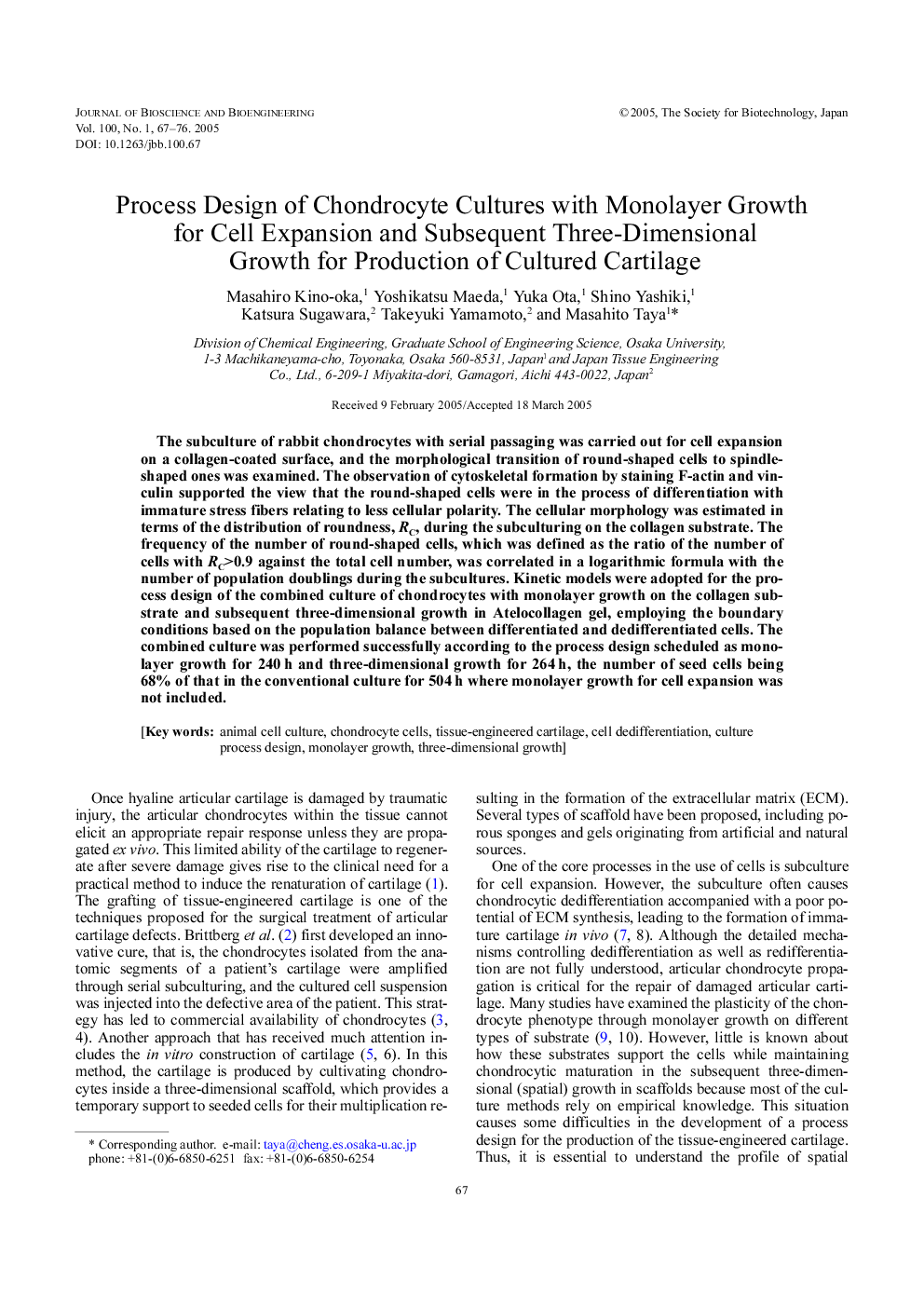| Article ID | Journal | Published Year | Pages | File Type |
|---|---|---|---|---|
| 9603183 | Journal of Bioscience and Bioengineering | 2005 | 10 Pages |
Abstract
The subculture of rabbit chondrocytes with serial passaging was carried out for cell expansion on a collagen-coated surface, and the morphological transition of round-shaped cells to spindle-shaped ones was examined. The observation of cytoskeletal formation by staining F-actin and vinculin supported the view that the round-shaped cells were in the process of differentiation with immature stress fibers relating to less cellular polarity. The cellular morphology was estimated in terms of the distribution of roundness, RC, during the subculturing on the collagen substrate. The frequency of the number of round-shaped cells, which was defined as the ratio of the number of cells with RC>0.9 against the total cell number, was correlated in a logarithmic formula with the number of population doublings during the subcultures. Kinetic models were adopted for the process design of the combined culture of chondrocytes with monolayer growth on the collagen substrate and subsequent three-dimensional growth in Atelocollagen gel, employing the boundary conditions based on the population balance between differentiated and dedifferentiated cells. The combined culture was performed successfully according to the process design scheduled as monolayer growth for 240 h and three-dimensional growth for 264 h, the number of seed cells being 68% of that in the conventional culture for 504 h where monolayer growth for cell expansion was not included.
Related Topics
Physical Sciences and Engineering
Chemical Engineering
Bioengineering
Authors
Masahiro Kino-oka, Yoshikatsu Maeda, Yuka Ota, Shino Yashiki, Katsura Sugawara, Takeyuki Yamamoto, Masahito Taya,
